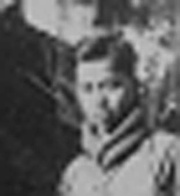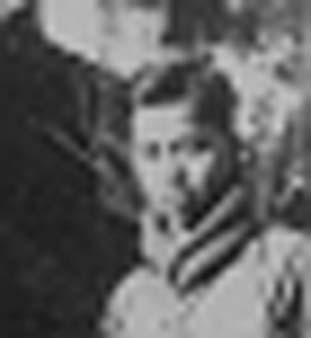
Banco de Dados da Experiência Militar Nipo-Americana

Satoshi Don Shimazu
Sexo
Male
Birth date
1923-11-18
Local de nascimento
Puunene, Maui HI, USA
Inducted
1943-03-24, Schofield Barracks HI
Tipo de alistamento
Volunteer
Ramo das Forças Armadas
Army
Tipo de serviço
War
Tipo de Unidade
Combat
Unidades onde serviu
522nd Field Artillery Battalion of 442nd Regimental Combat Team
Military specialty
Battalion Survey Sergeant for a Field Artillery Battalion
Stationed
Training period was at Camp Shelby, MS.
Combat in Italy, France, Germany.
Separated
Honolulu HI
Unit responsibility
To provide artillery support to the 442nd Infantry Regiment (including the 100th Inf.) and later to allied forces in the Rhine River crossing into Germany and in the subsequent campaigns.
Personal responsibility
To lead the 522nd F.A. Bn's Survey Section operations to locate our A Battery, B Battery and C Battery gun positions accurately for our battle maps each time they moved to new positions.
In Italy and France they moved as often as three times a day. In Germany, they moved even more frequently.
The way we operated, I used to accompany Capt. Billy Taylor, Bn. S-2, for reconnaisance and selection of each new gun position. After selection, I would lead our survey crew to locate the new positions and upon completion of our survey work report the information to our fire direction center. Needless to say, the accuracy and speed of our work was vital to the continuing effectiveness of our artillery fire.
Each of the three gun batteries consisted of four 105mm howitzers and they moved one battery at a time so that while one was travelling, the other two were still in action.
While the batteries were moving up to prepared positions, we were already working on the next position; so that many times, we were like the advance element of the artillery, somewhere between our infantry and our howitzers. We used to spend most of our time on our own. Our survey work was always done 'on the double.'
Major battles (if served in a war zone)
In Italy from Rome to the Arno River, then in France up to Biffontaine and the 'Lost Battalion' rescue, then to Southern France, in a holding position to rebuild the depleted ranks of the Combat Team, and then the Rhine Crossing and the German Campaign while our 442nd Infantry was sent back to Italy. After Southern France, the 442nd RCT was separated into two parts. The Infantry was sent back to Italy minus the 522nd F.A. Bn. Our artillery battalion was already very well known in the whole European Theater of War for our speed and accuracy; and they wanted us to help out for the crossing of the Rhine River by General Patton's forces.
Awards, medals, citations (individual or unit)
I was awarded the Bronze Star Decoration for the part I played during the battles to rescue 'The Lost Battalion of the 36th Division'. Our 442nd Infantry and the 100th were fighting the enemy in forests so dense and at such close quarters that they were unable to locate themselves on the battle maps. In that situation, word came to me that I had to lead my survey crew to carry survey control from the rear all the way to the front lines to locate our infantry by surveying methods. We did that against tremendous obstacles like mine fields and booby traps with trip wires all over the place.
Living conditions
Our conditions like that of the great majority was one of exposure to the enemy and the elements. Our exposure to the enemy was special especially in Italy where the country-side was often bare hills with only occasional olive trees.
The German forward observers for their artillery could see us doing our surveying and they did their damndest to knock us out with their artillery. Many times we were 'bracketed' by their fire which means their shells were falling in front and behind us. Fortunately, we were able to hit the ground every time the enemy shells approached and fortunately, too, there were no direct hits.
We slept in down-filled sleeping bags on the ground mostly and once in a while in buildings. I used to let my men pick the best sleeping places starting with the lowest ranking person and on up to me as the last one.
We did our bathing when water was available but usually with only one helmet full of water.
Meals were usually C-rations and K-rations.
Entertainment? Not much on the battle fields, but we had PFC Kaoru Sakima, who was our survey section's in-house entertainer.
Most vivid memory of military experience
1. When we first landed in Italy and were still in our staging area, the 34th Division General wanted to check us out and see how good we were. Our guns were supposed to fire on a certain target off in the distance. He was at an observation post between the target and our guns together with our field grade officers. When our guns started firing, the shells flew so close to the observation post and the sounds were so loud that the general instinctively hit the ground. It turned out that our survey work was ok, our fire direction center's firing commands were ok, but someone on one of the guns made a mistake with the gun settings. It was a very near miss and not at all funny at the time, but that was the only miscue that I remember.
2. In combat, we quickly established our reputation as a cracker jack outfit; so much so that during times of insufficient supplies of artillery ammunition, we used to get the lion's share allocated to our unit. Our gun crews were capable of firing 10 rounds in 46 seconds per gun.
3. We also became known as the time-fire experts in the whole European Theater of War - our time-fire on Hill 140 near Castellina, Italy is an outstanding example. Using only 12 rounds, we wiped out the entrenched Germans on the Hill.
4. In Germany after the Rhine River crossing and the breaching of the Siegfried Line, worthwhile targets for Allied artillery were very few and were getting scarcer by the day. Everytime there was one, at least a half dozen different artillery battalions would see it simultaneously and their forward observers would call back to their repective units for fire. In those situations, the 522nd was invariably the first to get on target and finish the mission - often before any other unit got their first round out there. Almost every day our commander, Lt. Col. Baya M. Harrison, would receive a visit from the commander of another unit to congratulate him on the 522nd's superb performance.
5. We had a veteran of the Solomon Islands Campaign attached to us as an observer. His unit was topnotch because they could handle two separate fire missions simultaneously on one radio channel and he came in a little cocky, maybe - until he saw the 522nd routinely handling three separate fire missions simultaneously on one radio channel.
6. We saw the first German jet fighter planes fly over our area and that was an experience. We used to see them fly thru our own P-47 fighter formations like our planes were standing still. This occurred when we were very close to Augsburg.
7. We saw one of the 30 odd Dachau Concentration Camps with the inmates of mostly Jews down to skin and bones. We did what we could as a unit for them and moved on because the war was still going on. I saw the Rev. Martin Niemoellar myself.
8. After the war ended, we were assigned to occupation duty in the small town of Mertingen. While there, our 1st/Sgt. Charles Ishii went on furlough and in his absence, I was picked by Capt. Joseph H. James, my CO to be acting 1st/Sgt. even though I was S/Sgt and there were many who outranked me.
9. I volunteered for further duty in Japan as interpreter at a time when Capt. James was in the hospital, but he wrote a very nice letter to me from his sick bed. The original of that V-mail letter is still with me as a treasure.
Missed most whilst in the military
My family and friends back home and also the home cooking.
Most important thing, personally, to come from military experience?
I was a University of Hawaii freshman. I went into the 442nd RCT as a boy with only fuzz to shave, but I think I came out a man. I want them all to know that those of us who volunteered and fought for the land of our birth fought because we are Americans no less than any other American! We do not have to feel inferior to anybody, and are entitled to all the privileges of American citizenship.
Additional information
Our survey section consisted of 7 enlisted men and 1st Lt. Edgar Langsdorf. The enlisted men besides myself were: T/4 Fred Yamaguchi, T/4 James Imada, Pfc. Kaoru Sakima, Pfc. Sazao Hironaka, Pfc. Mike Hara and Pfc. Soko Shimabukuro. You can find our group picture in John Tsukano's 'Bridge of Love' on page 386 and also on page 104 of 'Fire for Effect.' Pfc. Mike Hara was our jeep driver and Pfc. Soko Shimabukuro was our weapons carrier driver.
Since the foregoing information was first submitted, the 522nd FA Battalion veterans of Honolulu, HI have published a book about the Artillery of the 442nd RCT entitled 'Fire for Effect.' I am one of the contributors to that book from page 101 to page 128. Residence: Honolulu, HI


